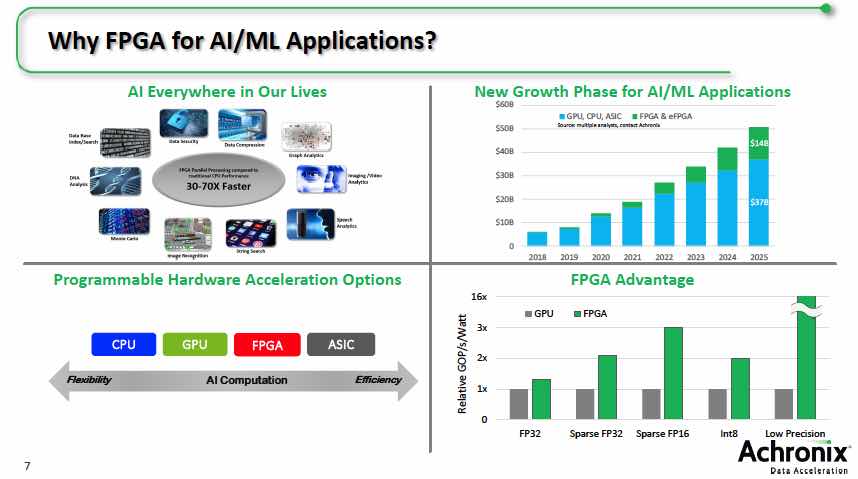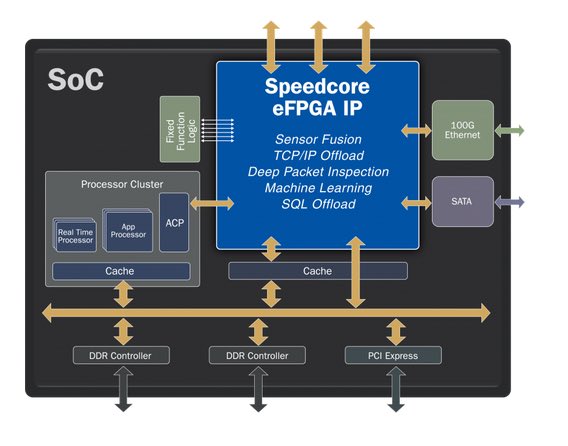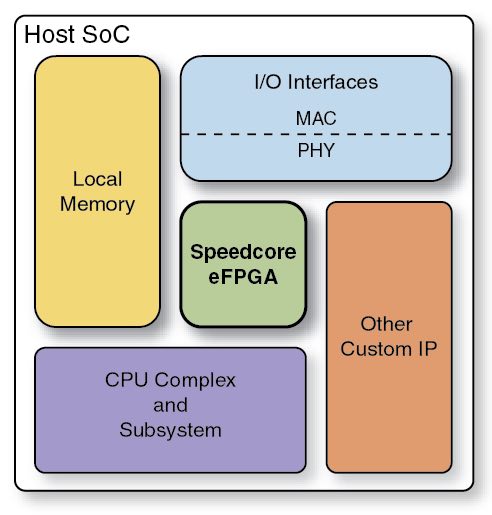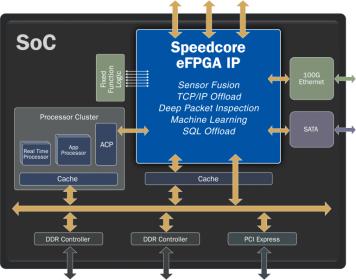In 2015 Intel acquired Altera for $16.7B changing one of the most heated rivalries (Xilinx vs Altera) the fabless semiconductor ecosystem has ever seen. Prior to the acquisition the FPGA market was fairly evenly split between Xilinx and Altera with Lattice and Actel playing to market niches in the shadows. There were also two FPGA… Read More
Tag: achronix
Building Better ADAS SOCs
Ever since we replaced horses in our personal transportation system, folks have been pining for cars that offer some relief from the constant need for supervision, control and management. Indeed, despite their obvious downsides, horses could be counted on to help with steering and obstacle avoidance. There are even cases when… Read More
Embeddable FPGA Fabric on TSMC 7nm
With their current line-up of embeddable and discrete FPGA products, Achronix has made a big impact on their markets. They started with their Speedster FPGA standard products, and then essentially created a brand-new market for embeddable FPGA IP cores. They have just announced a new generation of their Speedcore embeddable… Read More
Achronix Assists Academics
In every semiconductor related field, innovation is the name of the game. Academic, non-profit and government research has been a consistent source of innovation. Look back at the US space program, basic science research and even military programs to see where much of the foundation of our current technological age came from.… Read More
An FPGA Industry Veteran’s View of Future
There are tectonic changes happening in the world of FPGAs. A lot has changed since their introduction in the 80’s. Back then they were mostly used to implement state machines or glue logic. Subsequently they grew more complex with the addition of high speed IOs, eRAM, DSPs, other processors and other IP. More recently though FPGAs… Read More
Timing Closure Techniques for SOCs with Embedded FPGA Fabric
Once the benefits of using an embedded FPGA fabric are understood, the next question is about how timing closure is handled between the ASIC and the eFPGA blocks. First let’s look briefly at the advantages. By moving the eFPGA on to the SOC die, tons of I/O logic and the need for any package and board interconnect will vanish. Package… Read More
When Why and How Should You Use Embedded FPGA Technology
If integrating an embedded FPGA (eFPGA) into your ASIC or SoC design strikes you as odd, it shouldn’t. ICs have been absorbing almost every component on a circuit board for decades, starting with transistors, resistors, and capacitors — then progressing to gates, ALUs, microprocessors, and memories. FPGAs are simply one more… Read More
The Best of IP at DAC 2018 Conference
Design IP is going well, with 12% YoY growth in 2017, even if the market is about $3.5B. But Design IP is serving a $400B semiconductor market. Can you imagine the future of the semi market if the chip makers couldn’t have access to Design IP? The same is true for EDA: it’s a niche market (CAE revenues was about $3B and IC Physical Design… Read More
Achronix Momentum Building with Revenue Growth, Product/Staff Expansion, New HQ
5G Wireless, Network Acceleration, Data centers, Machine Learning, Compression, Encryption fueling the Growth
Building on its increasing momentum, Achronix Semiconductor Corporation held a ribbon-cutting ceremony on Tuesday, April 25, with the presence of Santa Clara’s Mayor Lisa Gillmor, customers, and partners, employees… Read More
New Architectures for Automotive Intelligence
My first car was a used 1971 Volvo 142 and probably did not contain more than a handful of transistors. I used to joke that it could easily survive the EMP from a nuclear explosion. Now, of course, cars contain dozens or more processors, DSP’s and other chips containing millions of transistors. It’s widely expected that the number … Read More











